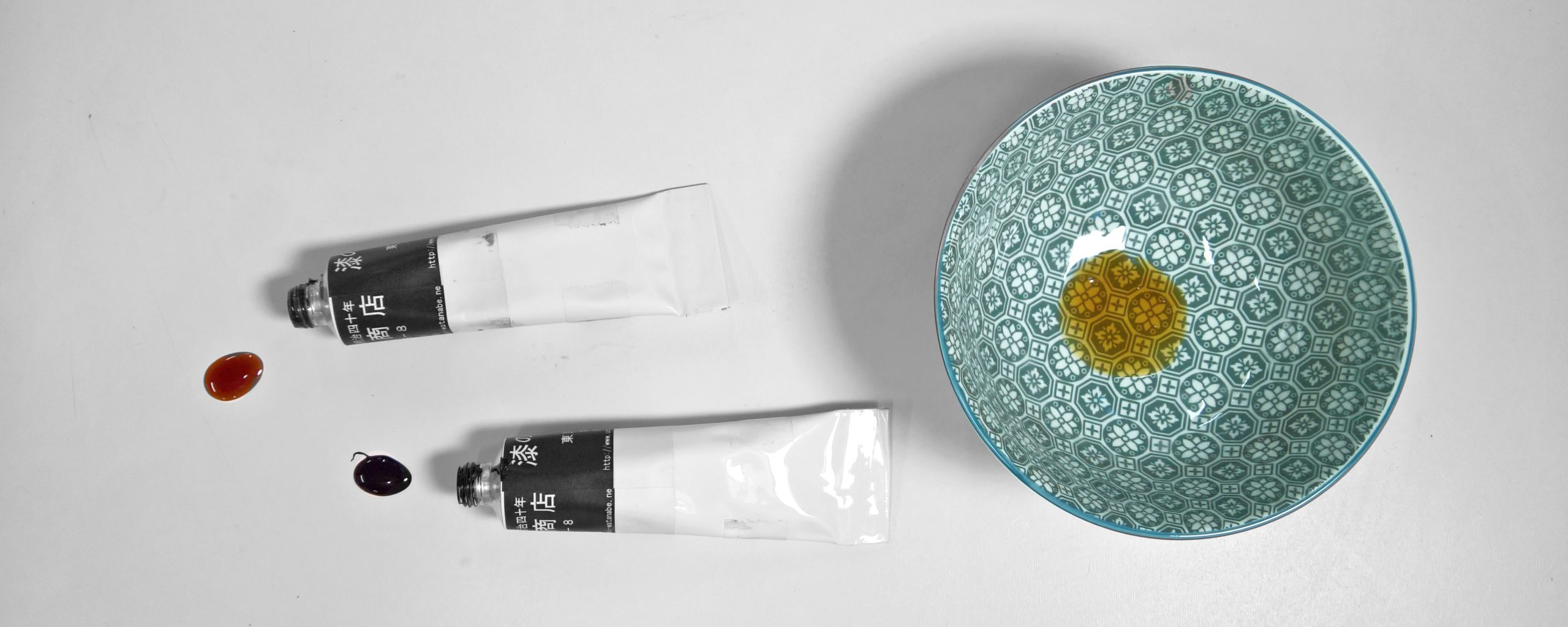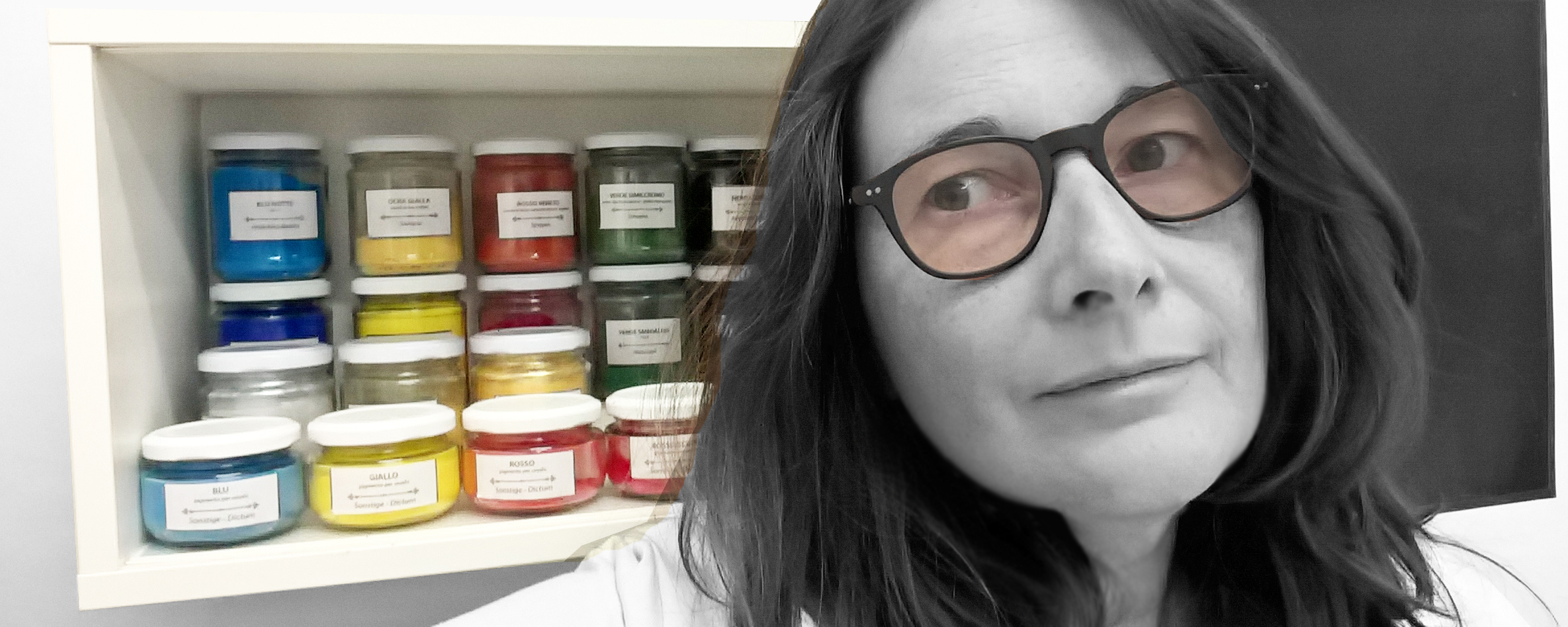Furo (urushi curing cabinet)



Ground layers (shitaji) is a basic structure that influences the durability and quality of lacquerware.
This kind of layers have also a protective function for the object base and sometimes is used as a decorative element.
The structure of the grounds depends on the lacquer decoration, on the nature of the object base and on the cheapness of the lacquerware.
As already explained in the urushi lacquer types page urushi lacquer is part of all stages of decorative production and this is also effective in the case of the preparation of the groud layers.
To explain it very simply, it is necessary to consider the ground layers as a buffer that connects the base support to the properly called “lacquering layers”.
Many different clay powders are used for the ground layers.
They can be different in color, hardness and grain size, according to the region and tradition origin.
There is a first base distintion for the clay powder used between jinoko and tonoko.
Jinoko is a coarse clay dust while Tonoko is a fine clay dust. These powders, combined with the raw lacquer (ki urushi), become part of the preparation layers, sometimes mixed in different percentages with each other.
There are various different ways of preparing the foundation layer but in all cases several urushi coatings, initially rough and then of increasing fineness, are applied before polishing.
Only after the foundation layer has been prepared does the application of urushi proper begin.
Summing up we can explain the basic sequence for the preparation of the ground layers as follows:
All layers are applied with a spatula in coats from thicker to thinner.
The layers are dry or wet sanded how is illustraded in the imagine below.



There are several urushi lacquer types and each of them is dedicated to a different use.

The Urushi lacquer is part of all the steps of the decorative production, from the preparation of the grounds to the final coatings.
In addition to this the first major distinction in the case of urushi types is between raw and refined lacquer.
There are two important steps in the refined process of the lacquer. They are generally done together.
The first, called kurome, is a dehydratation process. In this process is very important that the water content in the raw lacquer must reduced very slowly.
The second, called nayashi, is a process of homogenization. Oils (sesame, linseed, princess tree and rapeseed oil), resins (pine, gamboge) or coloring agents (pigments, iron filings) are added to the raw lacquer during the homogenization stage, depending on the viscosity to be obtained and the use of the finished lacquer.
Iron hydroxide (mixture of iron sulphate and caustic soda in a 10:3 ratio) reacts very rapidly with urushi and should be addeed at the end of the dehydratation process. It is mixed with water and then the precipitate is washed and filtered several times before it can be used for coloring.
A simplified diagram of the distinctions of different types of urushi lacquer:

Heckman Gunther, “Urushi no Waza, Japanese Lacquer Technology“, Nihon Art Publishers, Ellwangen, 2002. ISBN – 3980575527


Urushi lacquer is a latex extracted from trees growing in some Asian countries (in areas 500 meters above sea level), with a temperature range from 8 to 20° C and in which the rainfall exceeds 0,6 m a year.
The urushi lacquer is the most fine because the climatic conditions in Japan are the most favorable to obtain a high quality product.
Lacquer is obtained from the sap of the Rhus Verniciflua, a tree of the Anacardiaceae family.
Lacquer trees originally grew in the wild while for many centuries they have been cultivated.
The main harvesting time of urushi is between the middle of june and the end of september.
First tapping, called hatsuhen, is made from may to june.
Second tapping, called sakarihen, is made from june until september.
Third or late tapping, called osohen, is up to the end of november.
The sap of the lacquer flows in channels inside the plant. If the tree is damaged, the channels break and the sap the comes out.
This is what happens when a cut is made on the bark of the tree and a substance similar to latex leaks out: the raw lacquer.
It is a rather rare substance because even under ideal conditions mature lacquer trees produce a small amount.
The lacquer harvest takes place in mid-June and continues until the first cold weather (mid-October).
The trees used for extraction are carefully chosen, so that, in order not to damage the plant at all, each tree is used every three years and only four or five times during its life.
Modern harvest is carried out by making a series of horizontal incisions in the bark. The shape and style of the engravings varies from area to area.
Fresh lacquer has a milky-white or gray-yellow color that darkens as soon as it is exposed to the air.
After harvesting, the lacquer is immediately placed in a cup and covered to prevent it from hardening.
Once extracted, the lacquer needs to be clarified and processed. Twigs and other impurities must be filtered before further refinement.
Different degrees of purity of lacquer are used for different purposes.
The one used for the base layers does not require further refinement.
Raw lacquer is a protective, non-corrodible, acid and heat resistant, waterproof, luminous, shiny and long-lasting coating.
Freshly harvested lacquer contains 25 to 65% water, an amount that depends on where and when it’s extracted.
The presence of water is shown by a beige color, a milky appearance and a greater opacity of the viscous liquid.
Excess water can be removed from the lacquer to help harden, to improve the transparency and strength of the final product. For this purpose, the lacquer can be heated to temperatures around 40 ° C.
The main component of the lacquer is urushiol.
Urushiol is a mixture of phenol derivatives suspended in water with a small percentage of proteins, or rather an oil in aqueous emulsion.
The lacquer does not harden by evaporation of the solvent but by polymerization in the presence of humid air.
The molecule polymerizes under the influence of an enzyme (laccase) which forms very resistant chains with a cross-linked structure, according to a hydropolymerization process, that takes place in the presence of oxygen.
Urushiol is in fact responsible for the cross-linking that makes the lacquer so resistant and durable.
It is qualified as a thermosetting polymer due to the irreversibility of the hardening process.
Since lacquer curing depends on water and oxygen in the air, the surface layers are the first to start the reaction, sealing the underlying layers.
Urushi starts to hardened under defined conditions.
A fundamental parameter is the humidity which must be very high, from 75 to 85 %. The temperature is around 23-26 °C.

Many people show a more or less strong allergic reaction (Toxicodendron dermatitis or Rhus dermatitis) to not hardened urushi lacquer.
The extend, degree of severity and duration of the symptoms depends on the personal sensibility level, the quantity and duration of exposure to urushiol.
For this reason please always use thick gloves and covering clothes to protect your skin!


About me. I was born in Turin, a city in northern Italy. I am an extremely curious person who has made experimentation, study and research her modus operandi. I love to find solutions and I always like to take paths that lead me to new challenges.
Thanks to these characteristics I have decided to dedicate myself to the conservation and restoration of artworks because I think the restorer is a profession that allows me to grow many of my skills: love for art, knowledge of artistic techniques, the study of materials and the scientific approach, combined with a good dose of organization and analytical spirit.
My passion for Japan has distant roots and comes from the interest in the anime I grew up with. I discovered, through poetry within H. Miyazaki Anime Movies a world made of legends and traditions.
Through legends and traditions, the interest in urushi lacquer has ignited in me. A centuries-old artisan tradition which, thanks to the skill of the master lacquers, has allowed me to learn about a technique, handed down from generation to generation.
Combined with this the tension towards perfection, the continuous search for self-improvement through increasingly refined gestures and procedures, make lacquering a sort of meditative activity for me.
My “conscious encounter” with the lacquer world took place during the drafting of my degree thesis. My research subject was focused on archaeological woods (5th-3rd century BC) belonging to a funerary equipment of the Chu Kingdom (central southern China).
The preparation of urushi lacquer samples, useful for the study of surface degradation processes, kindled in me a deep interest for this material.
I discovered how lacquer, obtained from the latex of a plant, is a material that, in addition to entering into all the decorative steps of objects (from the preparation layers to the final coatings), can be used on any type of support (from metal to fabrics). In my opinion, these characteristics make lacquering a technique that has no equivalent among the materials used in other artistic techniques. It also represents an artistic technique that was born in the Neolithic (6000 BC), another feature that cannot be found in the others.
After graduation, I had the opportunity to carry out a post-graduate internship at the Oriental Art Museum in Turin, in which I was able to analyze in detail 70 lacquered objects of Japanese manufacture (inrō, netsuke, suzuribako and others) identifying, thanks to the use of a stereomicroscope, the different decorative techniques used (raden, nashiji and different types of maki-e).
As my interest in lacquer increased, I had the need to learn about the conservative approach to the restoration of lacquered objects by Japanese articrafts.
It was immediately obvious to me that the conservation needs of lacquer objects required special interventions. Reason why sometimes the materials used in Western restoration may be inadequate.
Over the years I have worked on many lacquered objects both for private clients and public institutions, including a beautiful Japanese palanquin (onna-norimono 18th-19th centuries) and various samurai armors on which, when possible, I started to use the Japanese conservative methods.
So for some time I have started an experimentation in my studio on the creation of lacquered surfaces on wooden objects according to different techniques.
The purpose of this experimentation is for me to be able to realize application of urushi art in modern design objects, the reason why UrushiLAB was born.
To find out more about me, please follow me on UrushiLAB pages.


UrushiLAB is a project born dfrom the desire to introduce people to the Japanese lacquering technique. It wants to show, through direct experience and a continuous path of study and experimentation, the world of lacquers.
After years of research on lacquerware, I want to share my experience and invite you to explore the secrets of this ancient technique. Discover with me a special material: urushi.
Much of my experimentation is still ongoing. This makes UrushiLAB a continuous working progress because, as the saying goes “You never stop learning“, a slogan that in the case of the lacquering technique is more true than ever.
UrushiLAB will also talks about the conservation of Japanese lacquers starting from the background of the author who discovered the love for lacquers from the study of their conservation.
Together we’ll discover the conservation needs and the processes of decay of lacquerwares, learning how to take care of these wonderful objects that, for centuries, have enriched the Western collections .
With the intention of spreading knowledge of Japanese urushi lacquering technique, UrushiLAB offers the possibility, through its articraftsmen, to create modern design objects decorated with urushi lacquer.
Keep in touch and stay connected with the UrushiLAB pages!
Simonetta
For further information on restoration work please visit the site of my conservation of cultural heritage company: RestART (site in italian).

